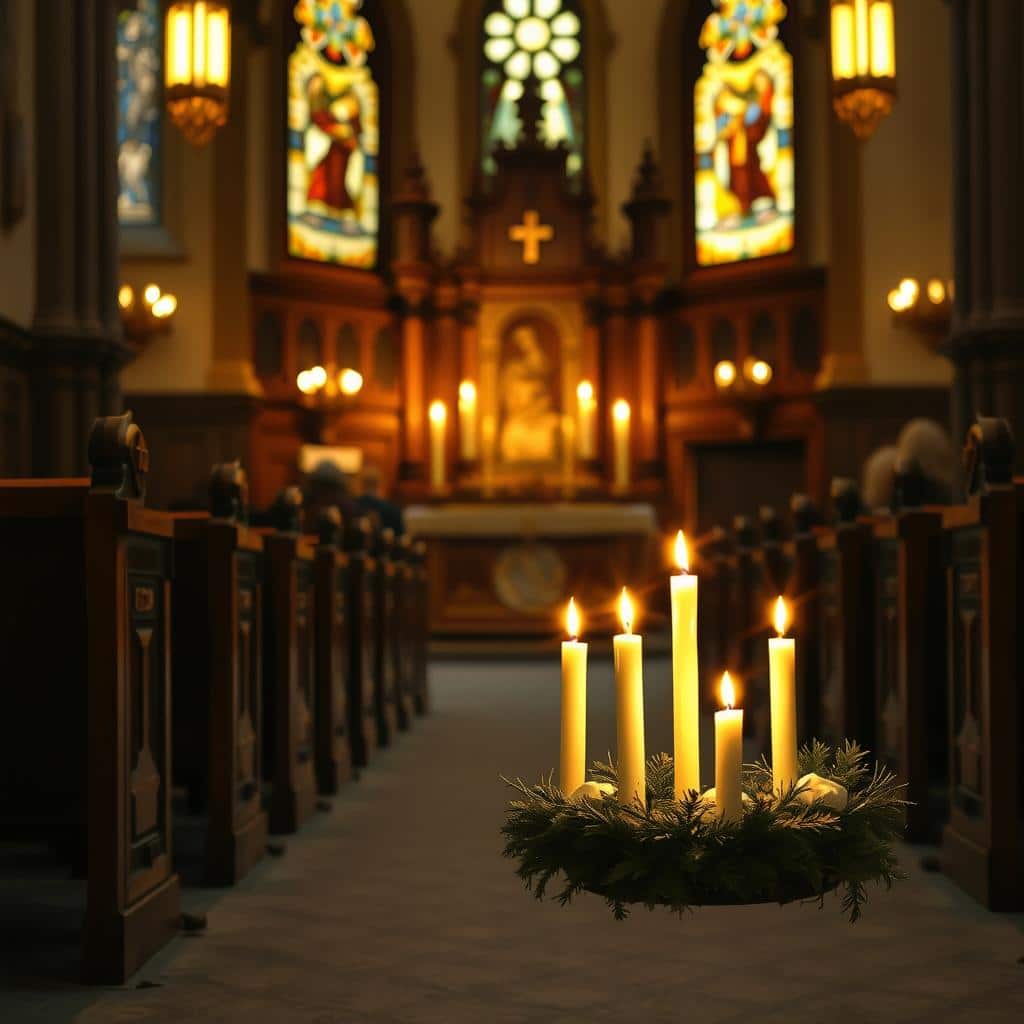Today I begin the new liturgical year with a clear aim: to enter a season marked by watchful waiting, practical preparation, and justice rooted in the Lord’s light. Isaiah 2:1-5 paints a vision of nations streaming in peace, while Psalm 122 bids us, “Let us go rejoicing,” praying for our city and community.
I set my week around the four appointed readings. Paul in Romans urges wakefulness and calling to put on the armor of light. Matthew warns that the Son of Man will come like a thief in the night, so vigilance becomes faithful stewardship, not panic.
My spiritual task is simple and concrete: choose hope over hurry, turn from darkness toward the Lord, and practice one peacemaking act each day. I commit to daily Scripture, a short prayer rule, and a small service that brings faith into my home and parish life.
Key Takeaways
- I will center my days on Scripture and prayer to stay alert and prepared.
- Isaiah and Psalm invite me to seek peace for my community.
- Paul calls me to wakefulness and to put on the armor of light.
- Matthew teaches vigilance as faithful readiness, not fear.
- I will practice one concrete peacemaking action each day this season.
How I Approach the First Sunday of Advent as a New Beginning
This new liturgical year invites me to reorder my days around prayer, hope, and simple commitments. I treat this Sunday as a spiritual reset: I reshape my calendar, name one habit to begin, one to revise, and one to surrender.
I let Isaiah 2:1-5 call me to walk in the light and Psalm 122 teach a joyful rule: enter God’s house with rejoicing, even if my house is the living room before sunrise.
“Wakefulness and steady prayer form the backbone of daily change.”
I ground this beginning in tradition: lighting the wreath, reading the appointed texts aloud, and explaining them at my table. I plan small, daily practices that fit family life: morning Scripture, a midday examen, and evening intercession for peace.
- I treat the week as a pilgrimage toward God’s house, not the culture’s schedule.
- I focus on the present day, trusting grace meets me where I am.
- I adopt the Gospel’s vigilant posture: awake, receptive, and ready in ordinary moments.
First Sunday of Advent, Cycle A: What the Readings Say
These Scripture passages give me a practical compass for watching and waiting. Each reading shapes a part of my response: hope, prayer, moral clarity, and steady readiness.
Reading 1: Isaiah 2:1-5 — Nations streaming to the Lord’s mountain
I read Isaiah 2:1-5 as a vision where all nations converge to learn the Lord’s ways. The image of turning swords into plowshares calls me to choose words and work that build, not break. This passage fuels hope that peace can shape everyday life.
Responsorial Psalm: Psalm 122 — “Let us go rejoicing” and pray for peace
Psalm 122 is a pilgrimage song that invites joyful prayer for the city. I pray for peace in my neighborhood, schools, and homes. Saying this psalm helps me center my petitions on communal well-being.
Reading 2: Romans 13:11-14 — Wake up and put on the armor of light
Paul’s call to wake from sleep feels urgent: salvation is nearer now, so I put on Christ’s light. I drop old habits and choose acts that reflect the Lord’s presence during my day.
Gospel: Matthew 24:37-44 — Stay awake for the coming of the Son Man
Matthew compares the coming to Noah’s time and a thief in the night. I cannot predict timing, but I can live ready. Vigilance becomes love for the Lord and care for others.
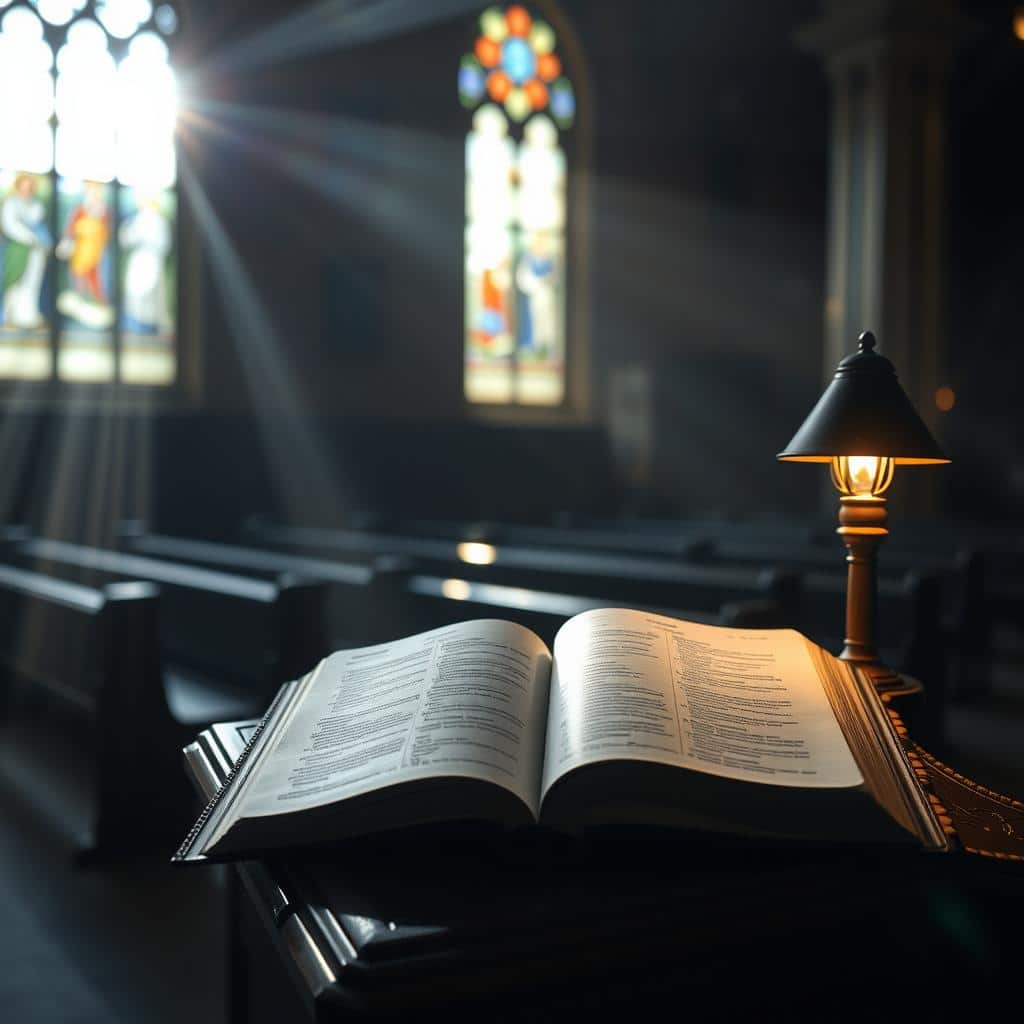
My Advent Mindset: Watchful Waiting, Preparation, and Justice
I embrace a posture of watchful waiting that turns memory into mission each day.
Why the Church begins with the Second Coming theme
The liturgy opens with future expectation to shape present choices. Matthew 24:37-44 warns that timing is unknown, so I trade speculation for steady readiness.
“Vigilance teaches me to live now with integrity, not to predict dates.”
Holding together first coming and final advent in daily life
I remember the first coming and prepare for the lord coming again in glory. Paul’s call in Romans 13:11-14 tells me to put on the armor of light as a daily habit.
- I make small safeguards: prayer times, service acts, and clear priorities.
- I aim for justice by choosing the vulnerable in conversations and plans.
- I use time so appointments with God sit alongside work commitments.
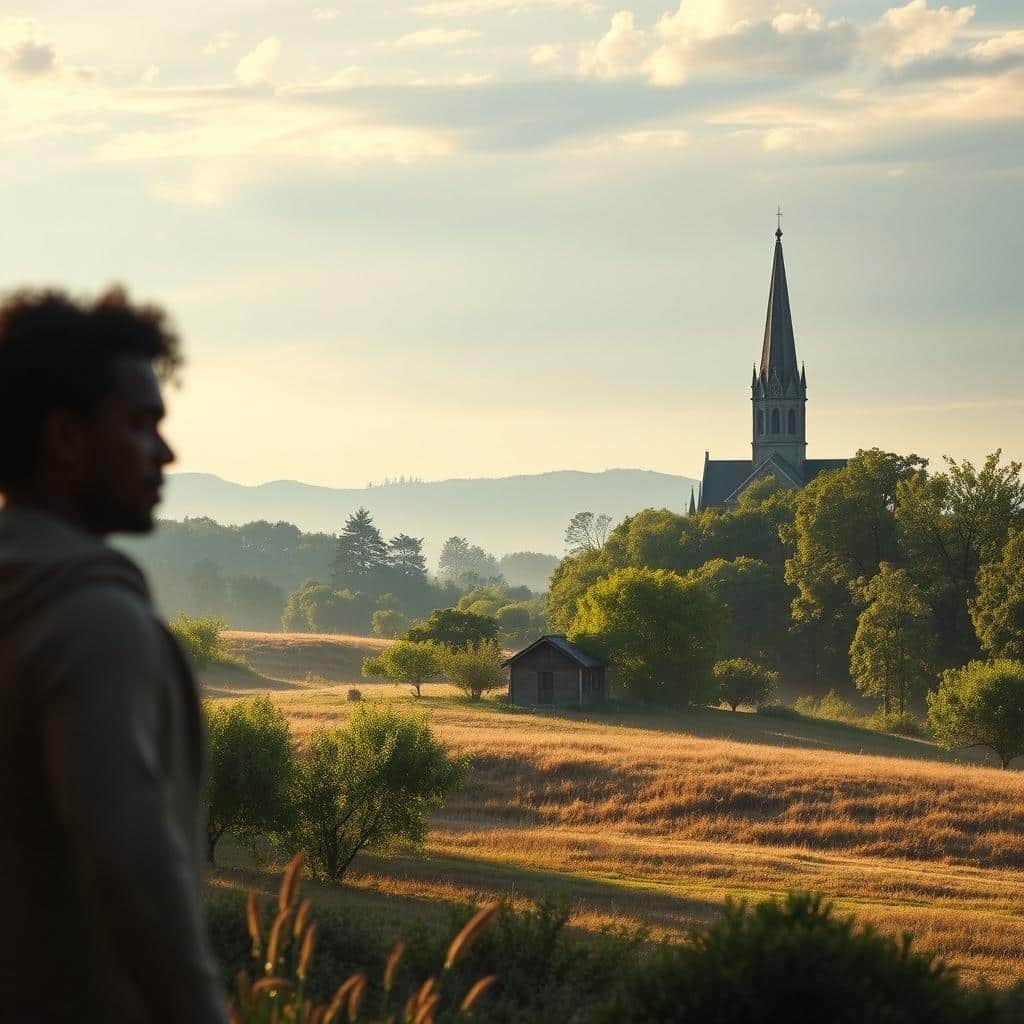
| Focus | Practice | When | Aim |
|---|---|---|---|
| Memory | Scripture & prayer | Morning | Hope |
| Mission | Service & safeguards | Day | Justice |
| Readiness | Nightly examen | Night | Fidelity |
Short rule: let tradition and practical habits train me to be awake, merciful, and prepared until the final passage.
Walking in the Light: Practicing Isaiah’s Vision of Peace (Isaiah 2:1-5)
I take Isaiah’s image of the exalted mountain as a blueprint for daily choices. The prophet shows nations drawn to instruction and instruments of war turned into tools for growth. That final exhortation—“Let us walk in the light of the Lord”—becomes my practical call for life today.
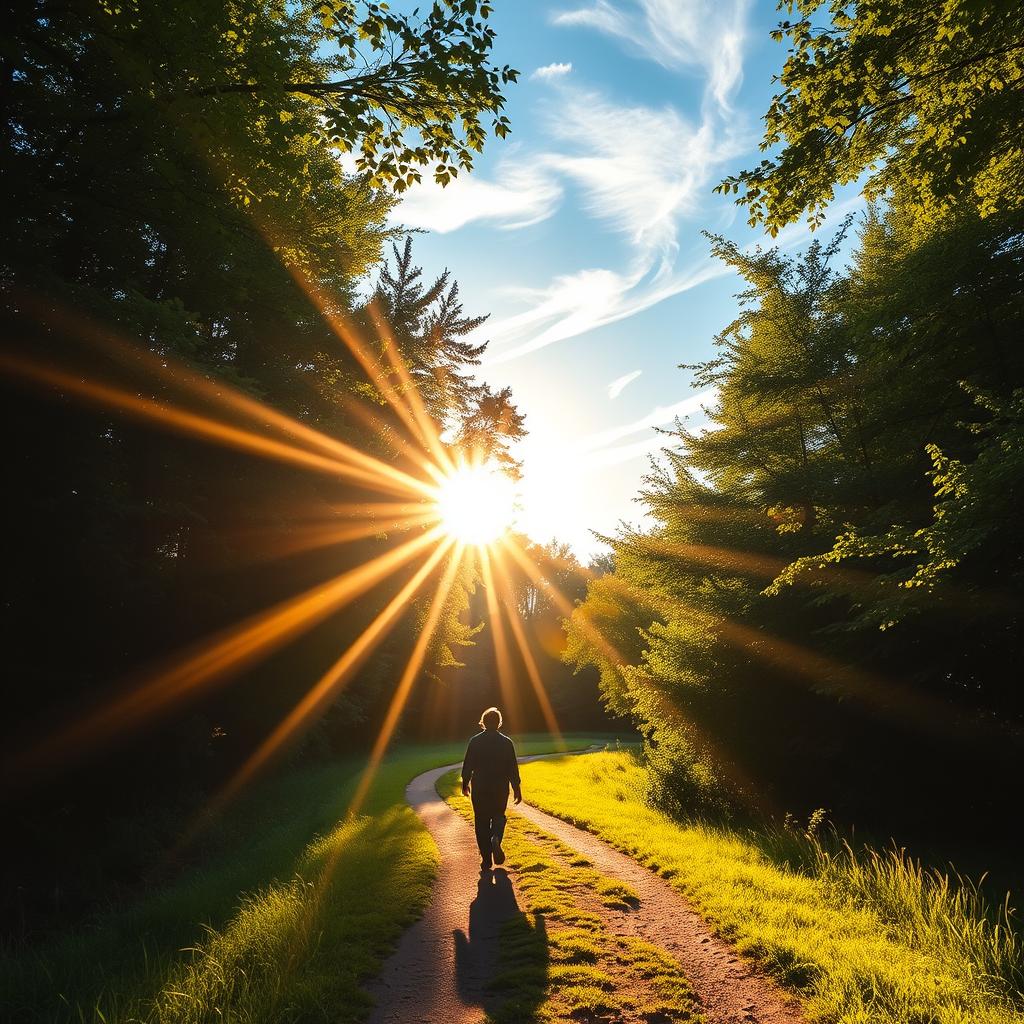
From prophecy to practice: learning the Lord’s ways
I begin with Isaiah’s line and move toward habits that teach the Lord’s ways. I study Scripture, join a parish group, and set formation before distraction. Small steps keep learning steady and teachable.
Turning swords into plowshares at home and in the world
I practice plowshare living by trading sharp words for patient listening. I choose fair dealing at work and volunteer where reconciliation grows. My repeated kindness can attract nations in small ways, showing others a better path.
“Let us walk in the light of the Lord.”
- Swap outrage for truth in my media diet to cultivate hope.
- Offer quick apologies and steady gratitude to till the soil of peace.
- Pray weekly for leaders, neighborhoods, and the wider world.
| Practice | Action | When |
|---|---|---|
| Study | Parish group or Scripture time | Weekly |
| Plowshare | Choose listening over conflict | Daily |
| Outreach | Volunteer and fair work | Monthly |
| Prayer | Intercede for people and places | Weekly |
I accept God’s pace: peace grows like a garden when I show up in the light again and again. This way keeps my heart ready and alive with real, steady hope.
Praying Psalm 122: Entering the Lord’s House with Peace in My Heart
When I prepare to gather, Psalm 122 becomes my guide to enter God’s house with a calm and steady heart.
Making “Let us go rejoicing” a living refrain
I pray the responsorial lines aloud as I approach worship. Saying “Let us go rejoicing” resets my posture and turns travel into a small pilgrimage.
I understand “Jerusalem” as both a real place and a sign of the Church. So my intercessions name my parish and city by name, bringing concerns for the people there.
I ask for the peace promised “within your walls” and apply that plea to the walls of my own house when tensions arise.
To make this psalm a daily refrain, I set a fixed time for brief prayer each morning. I tie specific petitions to the week’s readings, so requests are anchored and measurable.
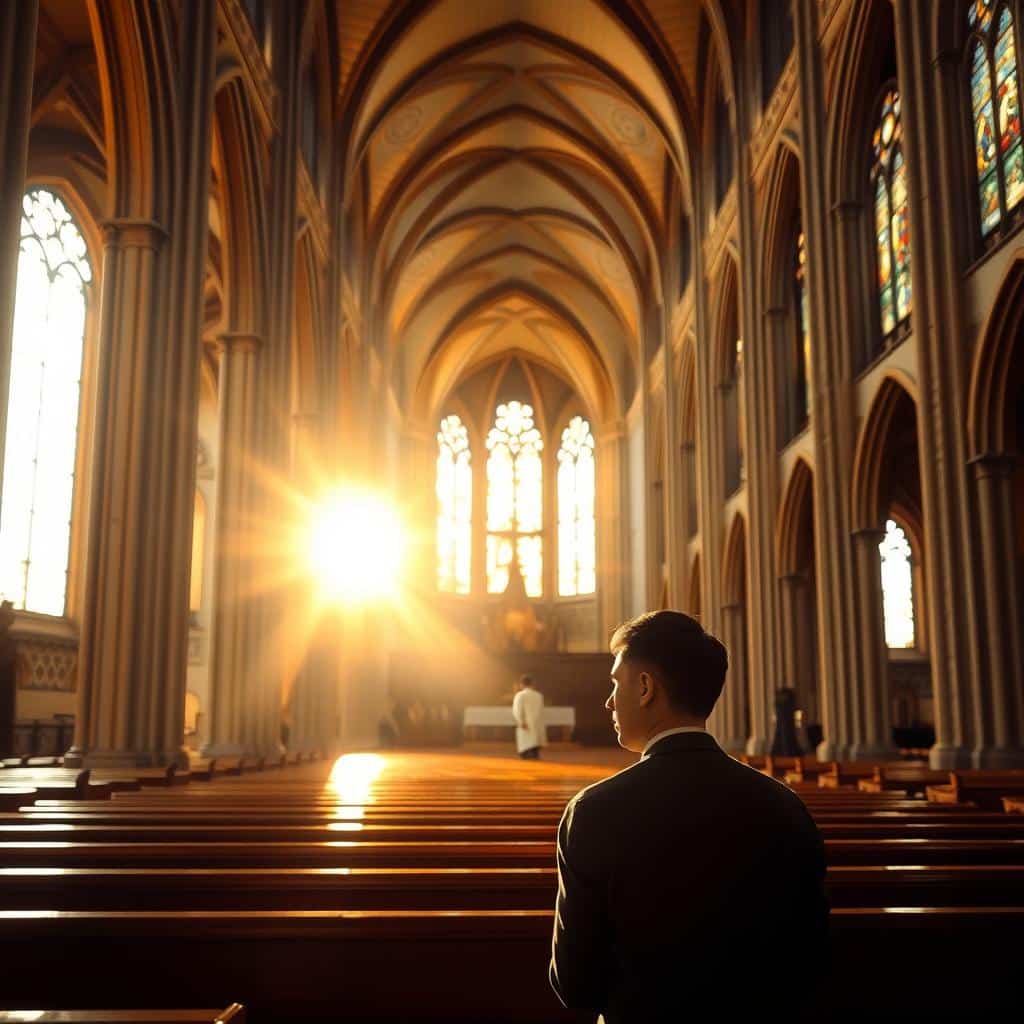
- I keep a short list titled “Peace I’m Praying For” near my prayer space and note answers.
- I ask to be made an instrument of peace in the places I go each day.
- These small practices form a habit that I carry into the year ahead, shaping the way I live today.
Putting On the Lord Jesus Christ: A Daily Readiness Plan (Romans 13:11-14)
My readiness begins before coffee: a short Scripture reading, five minutes of silence, and a clear choice to live in light rather than darkness.

Morning routine: how I “put on” the armor of light
I start by naming one virtue and praying, “Lord, clothe me with your light.” Then I read Romans 13:11-14 and take a brief act of surrender.
Leaving the works of darkness: concrete swaps and safeguards
I list two predictable temptations and add simple safeguards: app limits, accountability texts, and small environment changes.
- Swap impatience for a deep-breath pause.
- Trade complaining for gratitude by naming three graces before breakfast.
- Treat mornings as mission prep: God’s word is my briefing for the day.
Spiritual battle readiness: grace, habits, and accountability
I accept that formation takes time. I schedule a midday check-in to ask where I chose light and where I need grace.
“Put on the Lord Jesus Christ”—a daily dress code for faithful life.
I enlist one friend for weekly accountability and end each evening with a brief examen, trusting that salvation meets my next right step.
Always Be Ready: Living the Gospel’s Wakefulness (Matthew 24:37-44)
I choose habits that sharpen attention so the Gospel’s wakefulness shapes my hours. Jesus compares the days before judgment to the days of Noah and to a thief at night. That image presses me to steady vigilance, not panic or speculation.

Days of Noah, not “left behind”: what I watch for—and why
The Son Man comes without announced time. I watch for the subtle drift that dulls prayer and charity. When my routines slip, I lose readiness.
Vigilance over prediction: staying alert amid everyday life
I choose vigilance over forecasting by doing small duties well. Work done faithfully and promises kept form the habit of waiting rightly.
Guarding the house: practices to avoid being caught unprepared
Practical safeguards help me guard my house: fixed prayer times, Sunday Mass as a priority, regular confession, and Sabbath limits. I keep short accounts with others and reconcile quickly so nothing blocks my heart if the day lord arrives today.
“Stay awake; you do not know on what day your Lord will come.”
- I limit media and reclaim time for Scripture and service.
- I notice spiritual fatigue and answer it with rest and honest prayer.
- I expect the lord coming as mercy and justice, which shapes moral courage now.
| Watch | Practice | Result |
|---|---|---|
| Distraction | Media limits & brief examen | Focused prayer |
| Unreconciled relationships | Quick apologies & confession | Clear heart |
| Neglected duty | Small, repeatable tasks | Faithful living |
First Sunday of Advent, Cycle A: My How-To Framework for the Week Ahead
My weekly framework turns Scripture into three simple actions each day. I use the readings to shape short habits that keep me watchful, merciful, and steady in the light.
Prayer: a simple daily plan rooted in Scripture
Each morning I read one lectionary passage, pause for five minutes, and name one virtue to wear that day. I set a fixed time and place for this prayer and keep my Bible in view as a prompt.
Peace: one concrete peacemaking act each day
I use Psalm 122 and Isaiah 2:1-5 to inspire one reconciling call, a bridge-building conversation, or a help that eases someone’s burden. Small acts like these form a steady habit of peace.
Light: one habit to step out of darkness
Following Romans 13:11-14 I pick one swap to leave darkness behind—an earlier bedtime, fewer apps, or a brief examen at night. I live Matthew 24:37-44 by doing small duties with great love.

| Focus | Practice | When | Goal |
|---|---|---|---|
| Scripture | Read one lectionary passage | Morning | Insight |
| Prayer | Five-minute reflection | Morning | Clarity |
| Peacemaking | Reconcile or help | Day | Peace |
| Light | One habit swap | Night | Readiness |
“I track my week in a simple journal: Scripture insight, peace action, light habit—three lines, done daily.”
Family and Domestic Church: Bringing Advent Home in the United States
At home I sharpen simple rituals so the season shapes our family life and daily prayer.
I place an Advent wreath at the heart of my house. Each night we light a candle, read a brief Scripture, and pray Psalm 122 as a shared refrain for peace in our city and the people we love.

Advent wreath, shared Psalm 122, and a posted commitment
I post a one-sentence commitment near the wreath so every eye meets our promise to seek the day lord with ready hearts. Roles rotate: reader, candle lighter, and prayer leader. This simple tradition trains habit and hope.
“Pop quiz” readiness: forming hearts for the day of the Lord
I use a gentle pop quiz—two quick, fun questions—to teach that vigilance is steady care, not fear. We invite kids to answer and act. We choose a weekly service project to make peacemaking concrete.
- I limit screens during our short ritual and create a quiet place for worship.
- I end with gratitude, naming one gift we saw today.
“Watchfulness shapes ordinary love; Matthew 24:37-44 teaches vigilance with calm, not panic.”
Parish and Community: Walking Together Toward God’s House
In my parish I notice how shared songs and symbols shape a common readiness for worship. Music, art, and brief rituals teach a steady posture that carries into daily life. I want our gatherings to echo watchfulness and hope for the wider world.
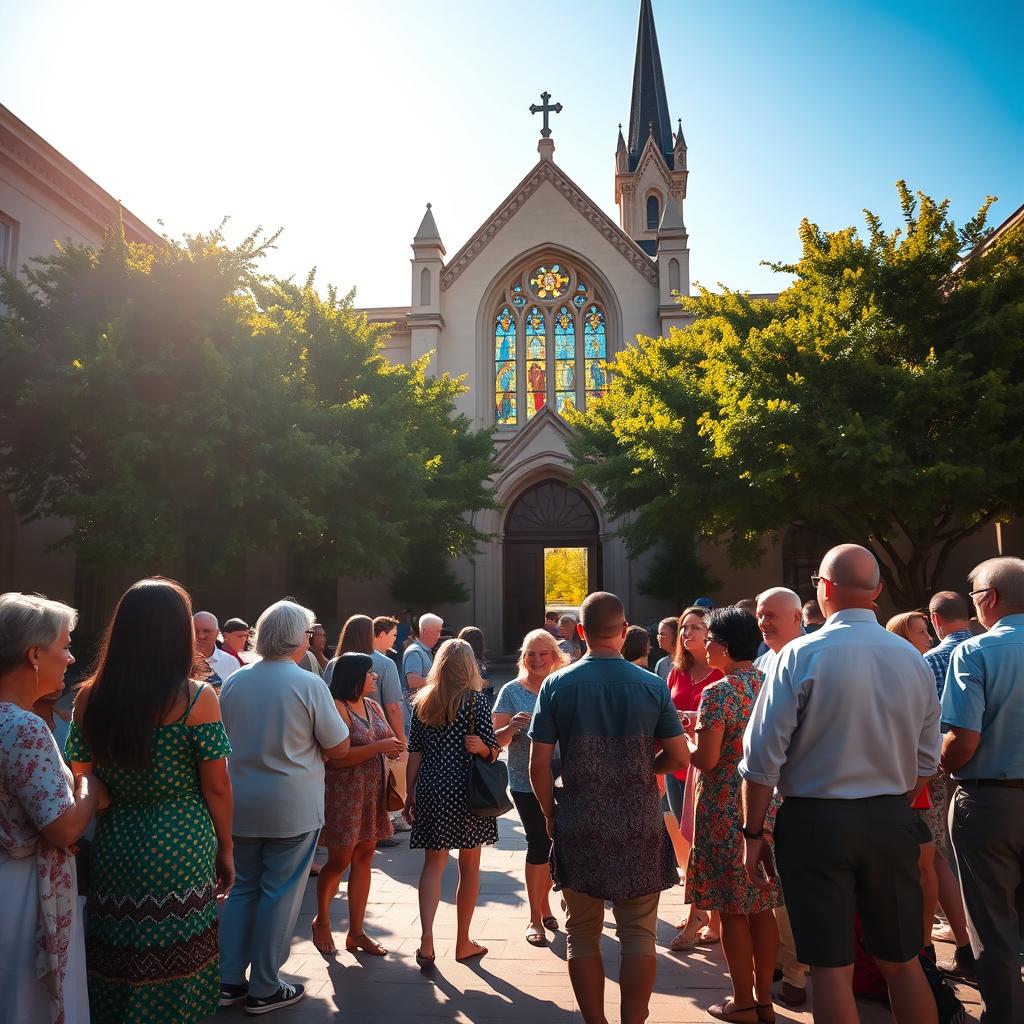
Music, art, and worship that echo watchfulness and hope
I look for hymns that wake the heart: pieces like “Christ Be Our Light,” “Stay Awake,” and “Let Us Go Rejoicing” help form vigilance. Good music and simple banners give people a way to carry the season into home and work.
Praying for peace in our city as a modern Psalm 122
I invite the assembly to pray Psalm 122 aloud, naming streets, leaders, and local needs. Isaiah 2:1-5 guides us to imagine nations streaming toward the Lord, then to turn that vision into acts of mercy here.
- I choose worship texts that teach vigilance and send people into the place where they live.
- I support intercessions that make Psalm 122 a living prayer for our streets and schools.
- I join ministries that reconcile and serve, letting Isaiah’s peace shape our work.
- I offer my gifts—music, hospitality, teaching—to strengthen communal readiness.
“Worship should train us to walk together toward God’s house and then out to our neighborhoods.”
Hope for Today and the Future: Holding Time in God’s Hands
I place my calendar on the altar of prayer so daily tasks serve a higher aim. Advent urges wakefulness; Romans 13:11-14 pushes me to live as if salvation draws near. Matthew 24:37-44 reminds me vigilance matters even when timing is unknown.
Balancing the season’s busyness with interior attention
I hold my schedule before God and ask for grace to order my time. I block prayer first, then fit chores around what feeds my life and love for others.
I welcome interruptions as invitations to love. When plans shift, I trust the Lord weaves hope into small disruptions. Glory often appears in tiny fidelities: a kind word, a quiet yes to serve.
“I choose presence over perfection and let my to-do list become a prayer list.”
- I name pressures and ask for practical help, opening channels of grace.
- I set a weekly ten-minute silence to re-center hope on Christ, not outcomes.
- I end each day with gratitude, noticing hope fulfilled in ordinary ways.
| Focus | Practice | When |
|---|---|---|
| Prayer first | Block morning prayer on calendar | Daily |
| Hopeful planning | Fit tasks around nourishing activities | Weekly review |
| Presence | Short silence; gratitude at night | Weekly & nightly |
Keyword Focus: Light, Peace, and the Day of the Lord in My Life
My daily habits become a map that points toward the day lord rather than a clock that counts down. I hold Isaiah 2:1-5 as a vision and Romans 13:11-14 as a call to put on Christ now.
First coming, final coming, and my daily conversion
I connect the first coming with final advent by choosing small conversions each day. Paul’s call to “put on the Lord Jesus Christ” drives simple swaps that shape my character.
Loving one another as a sign of the Lord’s coming
I let love for one another be the clearest sign of the coming christ. I measure my words so they bring peace and truth. These tiny acts reveal glory and show that salvation draws near.
- I keep a weekly mercy action: reconciliation, advocacy, or service.
- I say short prayers—“Jesus, light my path”—throughout the day.
- Each yes reshapes my life toward the Kingdom.
| Focus | Daily Action | Goal |
|---|---|---|
| Light | Short prayer and one habit swap | Readiness |
| Peace | Measured words and one reconciliation | Community harmony |
| Mercy | Weekly service hour | Visible glory |
“I keep the day lord as my compass, letting love and conversion guide each step.”
Conclusion
I close this reflection by naming a simple rule that keeps my heart ready each day. I trust that real hope grows when I practice it, one faithful step at a time. I carry Isaiah 2:1-5 and Psalm 122 into my routines so Christ’s light guides ordinary work and rest.
I treat this season as a classroom for faith. Romans 13:11-14 trains me to put on the armor of light, and Matthew 24:37-44 calls me to steady wakefulness for the Lord’s coming. I welcome the season’s simplicity and let small acts shape my faith today.
I pursue peace and readiness as one way of loving God and neighbor. I keep my eyes on Christ’s light, renew my commitment to pray for our city, and resolve to begin again tomorrow if I stumble. I go forward in faith, ready to meet the Lord in the fullness of time.
